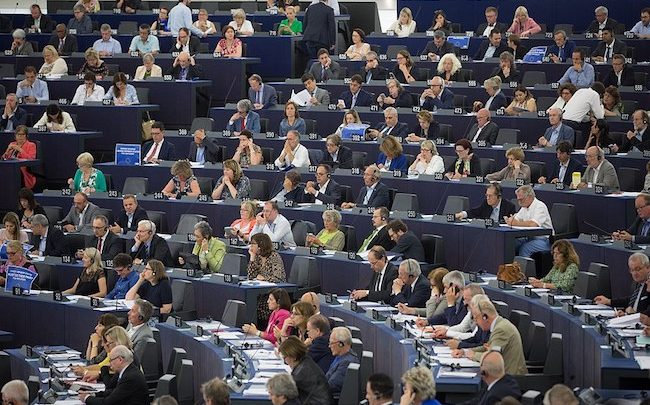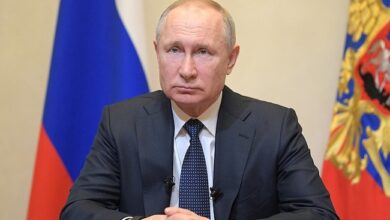
By Tatiana Coutto, University of Warwick
The European Parliament elections are not unlike cricket. Both can last for quite a few days and it can be pretty hard to understand the rules. This year’s European elections take place between May 23 and 26 and different countries vote on different days.
It’s not surprising that few people bother to vote in these elections, either because they find the whole process too complicated or because they find it boring (some people feel the same about cricket).
But this year’s vote is shaping up to be more interesting than most. The populist surge across Europe is being felt in Brussels, as eurosceptic parties aim to cause trouble from inside. The UK’s failure to secure a Brexit deal has left it in the bizarre position of needing to stand candidates despite its planned departure from the bloc.
Parties across the political spectrum have launched initiatives to encourage 400m EU citizens to register and vote. The European Parliament (EP) launched the “This time I’m voting” campaign with the same objective, and an app with information about registration and voting in all member states.
Here’s how the vote will work and why these elections are actually very important.
The basics
EU citizens will be voting to fill 751 seats in the European Parliament. Although, if the UK pulls out at the last minute in the unlikely event of agreeing a Brexit deal, they will be voting to fill 705 seats.
EU citizens vote for the candidates or parties of their country of origin or residence, provided that they are registered. Those living overseas can use their country’s embassies, consulates or schools to vote for a candidate running in their home country. The minimum age is 18 except in Austria and Malta (where it’s 16) and Greece (where it’s 17). Voting is compulsory in Belgium, Bulgaria, Cyprus, Greece and Luxembourg – although this rule is not always enforced.
Each member state is allocated a certain number of seats in the European Parliament, according to the size of its population (economic indicators or size of the territory don’t matter in this case). France, for example, currently has 74 seats, Malta and Luxembourg have six MEPs each and the UK has 73.
Voting processes vary significantly from one country to another, but they all include some element of proportional representation. For example, Ireland has three constituencies (Dublin, Midlands-North-West and South) and voters rank the candidates, as many or as few as they wish, in order of choice.
France used to divide its candidates into eight constituencies but these have now been abolished. This year, voters will instead choose from a single electoral list – meaning they vote for a party and not for individual candidates. Bulgaria also has a single constituency, but voters can indicate their candidate preferences within the party list they choose. Estonian citizens and permanent residents can vote online.
How is the parliament organised after the vote?
Once elected, MEPs are organised by transnational groups that reflect their political affiliation. The current parliament has eight groups. These include the centre-left Alliance of Socialists and Demorats (S&D) and Europe of Nations and Freedom (ENF), which brings together the French National Rally, the Italian Lega and other far-right parties.
The largest group is the centre-right European People’s Party (EPP), which has 216 MEPS. This includes Angela Merkel’s CDU and Viktor Orbán’s FIDESZ (although he has been suspended by the group until further notice). There are also 21 MEPs who do not belong to any group.
The party with the largest number of seats gets to appoint the president of the European Commission, a position currently held by former Jean-Claude Juncker, the former prime minister of Luxembourg. The president is akin to a conductor: he or she sets the tempo and makes sure the orchestra plays in a harmonious way but they cannot choose the repertoire alone. In the European Parliament, no party family has the majority of the seats so they have to reach out to other groups, working together to to approve legislation.
Why is there a European parliament?
The idea that there should be a parliamentary assembly to represent the citizens of the member states dates back to 1952, when the Coal and Steel Community (the precursor of the European Community) was established. At that time, the 142 members were national parliamentarians appointed by their respective governments. They played only a marginal role, while the “real” decisions were made by the member states.
The first direct elections to the parliament took place in 1979 and the body has, over time, developed political muscle. Together with the European Council (which represents the member states), the parliament is now responsible for preparing and adopting the EU budget – which amounts to €165.8 billion in 2019.
The parliament legislates on all kinds of important issues, from food standards to LGBT rights. In March, for example, 560 of the 751 MEPs voted in a new law banning single-use plastic items such as plates and cutlery by 2021.
Why is there such a low turnout?
Despite the important role the parliament plays, voter turnout has dropped from 62% in 1979 to 43% in 2014. In some countries, participation is incredibly low. Only 13% of Slovakian voters went to the polls in the last elections.
In some of the newer member states, the perception that voting doesn’t make any difference, together with mistrust in politicians and in politics in general, keeps people from participating.
Europe’s media also doesn’t cover the parliament’s work much, so people don’t pay attention to it. It rarely goes viral, and when it does, it’s usually for the wrong reasons.
This all combines to give the impression that the parliament is not an organisation to be taken seriously. But the European Parliament is, in many ways, the human face of the European Union. It is made up of people from different countries, who all bring different stories and experiences – people like the Polish MEP Marek Plura, an advocate for policies that promote a more inclusive society for people with disabilities (he suffers himself from a degenerative illness).
Nevertheless, there is still room for improvement when it comes to gender balance and ethnic diversity in the parliament. Women make up just 37% of the 751 MEPs, and less than 20 MEPs identify themselves as non-white (there are no official statistics on this because several states are against collecting data on ethniticty).
Why should people vote?
Despite the low levels of participation in European elections, it’s worth noting that 50% of Europeans say they trust the institution, while only 34% feel the same about national governing bodies.
On average, 68% of European citizens believe their country has benefited from EU membership. People like the idea of easily travelling to another country and are attached to the Euro (France’s Marine Le Pen and Italy’s Matteo Salvini changed their discourse about the single currency after they were confronted with that evidence). And in Romania, Spain and Poland, EU membership is often regarded as a sort of antidote to the excesses of national governments.
The European parliament is also often to be found leading the charge on issues that are truly important to European citizens such as environmental protection, transparency and data protection.
Recent protests in France and in other countries have shown that EU institutions have not properly addressed some of their citizens’ most crucial concerns. Many of these concerns have less to do with national issues such as immigration and political parties and more to do with a broader hope for a brighter, fairer and happier future. As a transnational body, the European Parliament has a unique role to play in addressing these big issues, and communicating them to the public.![]()
Tatiana Coutto, Teaching Fellow, Department of Politics and International Studies, University of Warwick
This article is republished from The Conversation under a Creative Commons license. Read the original article.




